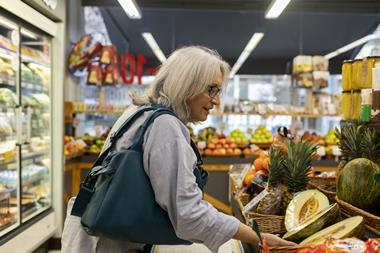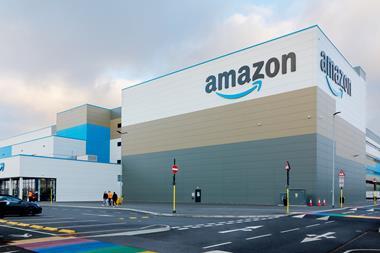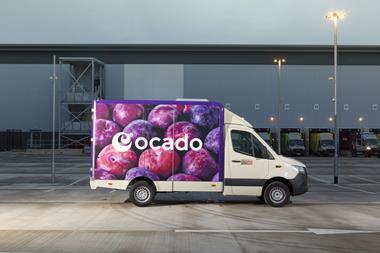Amazon’s slowdown has spooked the City. What happens now?
Amazon last month reported its smallest year-on-year rise in revenue for 20 years: just 7% in Q1 2022. CFO Brian Olsavsky said it now had too much warehouse space and staff working in them, explaining “the issue is switched from disruption to productivity losses to overcapacity”.
The rest of e-commerce is facing similar slowdowns. IMRG/Capgemini reported this week that online retail sales fell 12% year on year in April. “After two years of huge volume increases online, it would seem the online retail boom is over,” says IMRG strategy and insight director Andy Mulcahy. In its latest April data release, Kantar reports online grocery sales were down by almost 15% compared with April 2021. Online’s share of total grocery sales has dropped by 1.5 percentage points since the month before. As Kantar’s Fraser McKevitt, explains: “While online shopping is definitely here to stay, it’s less of a necessity now”.
So what does it mean for warehousing in the UK? After a space race in the pandemic, is e-commerce now, as Jefferies head of Europe real estate research Mike Prew asks, “spaced out”?
Amazon was responsible for 24% of UK logistics leasing in 2021, so its warning is hugely significant for the logistics property sector. The City certainly thought so. The share prices of logistics developers Segro and DC investor Tritax Big Box REIT both took a nosedive in the wake of Amazon’s results.
“As the market shifts to the ‘new, post-pandemic normal’, we will see online penetration rates fall back slightly from those recorded at the height of the pandemic,” says Claire Williams, head of industrial research at Knight Frank. “This will mean the need for rapid expansion and short-term space requirements may soften.”

James Newman, director of EMEA at warehouse automation company GreyOrange, says that for several e-commerce businesses “rapid investment in large distribution centres seemed like a shrewd business decision at the time, but there was overexpansion for some”.
“In the past few weeks especially, multiple retailers have been forced to clear out their storage facilities in order to cope with the host of financial pressures affecting them,” he adds.
However, the value wipe-out of listed logistic developers was chiefly driven by spooked trading algorithms, says Colliers head of industrial and logistics Len Rosso. “There’s always an overreaction from the City” he says.
Prew agrees the response was “too pessimistic” but says “any plateauing in demand for the dominant tenant could crimp growth”.Rosso He argues talk of e-commerce growth ending is “absolute rubbish”. “Just because something drops off doesn’t mean it’s going backwards.”
Knight Frank analysis of ONS, Mintel and Oxford Economics data forecasts that while online’s share of total retail sales will drop from 29.1% in 2021 to 25.9% this year, it will recover to a record 30% by 2025.
Long-term growth
“Though the race for space we have witnessed may ease, the market remains in expansion,” says Williams. “The long-term trend is one of growth”.
HelloFresh this week opened its third DC in Derby, with rival Gousto’s new site under construction. Several rapid grocers are seeking DC-scale centralised dark stores, as Ocado establishes a clutch of spoke sites and Zoom depots.
Colliers analysis shows take-up for 100,000 sq ft-plus units in the first quarter of this year was 17% up on Q1 2021, a year of record take-up. Meanwhile, availability of such units is down by more than a fifth year on year. “There continues to be a lack of stock,” says Colliers head of industrial and logistics research Andrea Ferranti. And that’s with the 27 million sq ft of UK warehouse space Cushman & Wakefield estimates will be built by the end of this year.
“Despite some challenges ahead for occupiers and developers in light of the wider economic and geopolitical climate, the warehousing sector is expected to continue to perform strongly relative to other sectors,” says Richard Evans, head of UK logistics and industrial at Cushman & Wakefield.
Ultimately, despite any tempering of the e-commerce boom, its demand on warehousing space will sustain. Even as new developments pop up, Prew adds, there will “unlikely be enough to go round”.




















No comments yet